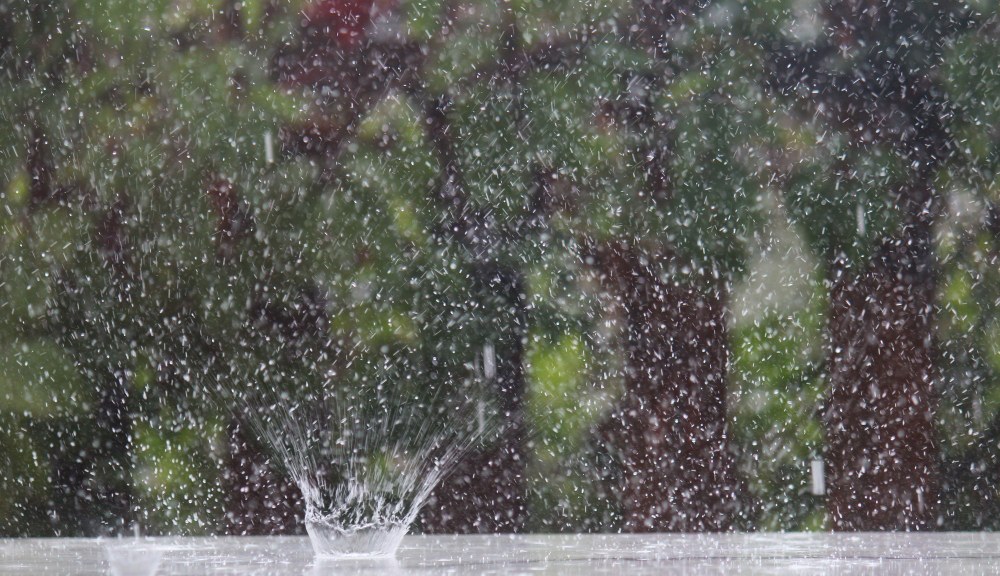
Winter is mostly gone. The ground is thawing. You watch as sunshine comes, then goes and dark clouds rumble in the distance. As the clouds move closer, the air changes and you smell the earth. The scent is sweet and almost savory, like honeysuckle flavored olive oil or carrot flavored cake. Breathe it in. Remember, as a child, playing in the rain? Breathe it out. It didn’t matter how wet you were, you kept playing as the earth reminded you it was spring with that delicate, thick, familiar scent: petrichor.
Petrichor is often known as the smell of rain, yet the true source of petrichor is much more complex. Petrichor emanates from the soil and falls from the sky. It’s pure, potent, packs a punch, and always leaves us wanting more. In fact, humans have made last-ditch efforts to savor the smell by trapping it in mason jars or infusing it in scented candles. Whether these methods preserve the integrity of petrichor, we can’t be sure, but we are fairly certain there’s nothing more nostalgic than the smell of spring.
What is petrichor?
While petrichor can be experienced in many ways, its smell is predominantly that of soil components - plant oils and Geosmin - that are produced in dry soil.
When water is scarce, plants release rich oils to prevent seedlings from germinating, and the soil retains these oils through the dry season. The aroma of these plant oils contributes to the scent of petrichor but is not solely responsible. The main contributor to petrichor is Geosmin, a compound secreted through the spores of soil-dwelling bacteria. Geosmin is like the chocolate chips in a chocolate chip cookie - crucial, and debatably mandatory. Humans are particularly sensitive to Geosmin, detecting it at less than five parts per trillion. Without knowing much about scientific values, we can surely all agree that is very small, and our noses are very powerful.
From source to nose
When raindrops land on the surface of arid soil, they trap tiny air bubbles underneath. These air bubbles, holding Geosmin and plant oils, shoot upwards - like your favorite glass of champagne - and burst through the soil’s surface. As the air bubbles are released from the ground, so are the aerosols. This scent is then picked up and carried great distances by the wind, which is why you often smell petrichor before you feel the rain.
Petrichor also falls from the sky. More specifically, petrichor comes from the protective atmospheric layer, ozone. The smell of ozone is known to be reminiscent of the chlorine at public pools that definitely kills your swim neighbor’s pee. During thunderstorms, ozone is produced when lighting splits oxygen and nitrogen molecules high in the atmosphere. Then, the rain and wind bring the scent down to Earth.
Spring is in the air
In spring, humans experience petrichor with upmost intensity, even when rain isn’t imminent. Petrichor is sensed when sunshine thaws the soil’s surface, releasing reserves of Geosmin and plant oils held underground through winter. Gardener’s release Geosmin when they turn their garden beds to prepare for planting, just like farmers do as they plow their fields. Over time, we’ve come to subconsciously celebrate this smell of tilling soil, the arrival of rain, and therefore the arrival of petrichor, harboring deeply imprinted joy and nostalgia each spring. We may experience petrichor in a variety of ways, but one thing remains: our human kinship with the sweet air of spring.
This article originally appeared in our spring 2024 issue of Mountaineer magazine. To view the original article in magazine form and read more stories from our publication, visit our magazine archive.
Add a comment
Log in to add comments.Great article, Bayley, something to add to our naturalist lore
 Bayley Stejer
Bayley Stejer